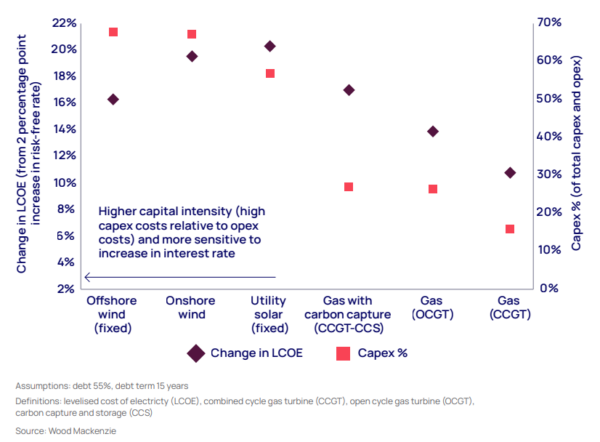Mercom Capital Group says total corporate solar financing, global venture capital financing, public market financing and PV M&A all declined year-over-year in the first quarter of 2024. The sector is still struggling with high interest rates, which according to Wood Mackenzie disproportionately affects renewable energy projects.
The global solar sector is “experiencing peak uncertainty and a challenging investment climate,” Mercom Capital Group CEO Raj Prabhu said in the advisory’s new report on financing and mergers and acquisitions (M&A) in the first quarter of 2024.
Mercom said total corporate financing in the solar sector stood at $8.1 billion in the first three months of the year. The figure includes 41 deals, marking a 4% year-on-year decline. However, the figure is a 47% quarter-over-quarter increase from the $5.5 billion raised in the fourth quarter of 2023.
Elsewhere, global venture capital financing in the solar sector in the first quarter of 2024 reached $406 million through 13 deals, down 81% year-on-year. Public market financing reached $1.4 billion through six deals in the first three months of 2024, down 39% year-on-year. Debt financing grew 59% year-on-year across 22 deals, according to Mercom.
“The solar sector is experiencing peak uncertainty and a challenging investment climate,” Prabhu said. “The sector is grappling with multiple headwinds, including the likelihood of continued high interest rates, higher labor and construction costs due to inflation and supply chain issues, coupled with trade disputes and tariffs.”
Mercom recorded a total of 21 solar M&A transactions in the first quarter, unchanged from the fourth quarter of 2023, but down from 27 solar M&A transactions recorded in the first quarter of 2023.
“While the collapse in Chinese module prices has boosted demand, it has made investment in manufacturing projects unattractive, even with incentives. Venture capital investment has declined and M&A activity remains subdued,” Prabhu added. “Given current market conditions, it would not be surprising if the recovery is further delayed in relation to rate cuts.”
Meanwhile, Wood Mackenzie said in a separate report that if high interest rates persist, the transition to a net-zero global economy will be “even more difficult and costly.”
The consultancy’s latest report, Conflicts of Interest: The Costs of Investing in the Energy Transition in an Era of High Interest Rates, said the higher cost of borrowing negatively impacts renewables and emerging technologies compared to oil , gas and metals and mining sectors, putting future renewable energy projects at risk.
“Interest rates, which have risen sharply over the past two years, may not fall as far or as quickly as markets expect,” said Peter Martin, chief economist at Wood Mackenzie. “This increased cost of capital has profound implications for the energy and natural resources industries, particularly the cost and pace of the transition to low-carbon technologies.”
WoodMac said that in the United States, a 2% increase in the risk-free interest rate could raise the levelized cost of electricity (LCOE) by up to 20% for renewables. The comparative LCOE increase for a combined cycle gas turbine is 11%.

The research firm said solar and wind have an economic advantage over hydrocarbon generation sources, but higher interest rates are undermining that.
“Although power and renewables companies are more heavily leveraged, they compare favorably to other peer groups on a cost-of-debt basis. But that’s what makes them more sensitive to interest rates,” Martin said. “De-pricing and risk-taking mechanisms allow energy and renewable energy companies to obtain debt more cheaply than the relatively risky oil and gas, metals and mining sectors. Therefore, the recent rise in interest rates has a larger proportional impact on the cost of their debt.
print edition of pv magazine
The April edition of pv magazine looks at a $9 billion subsidy package for Indian rooftop solar, looks at energy community movements in the US and Italy – as well as the pushback against renewables in Australia – and extends to Egypt, Central Asia and the Middle East. All this plus a special section featuring this year’s E Europe Smarter Energy Show.
WoodMac said policymakers should focus on strengthening carbon markets, maximizing the effectiveness of subsidies and mobilizing green finance to offset headwinds, he added.
“The good news is that there are actions that policymakers can take now to help offset, or at least soften, the burden of higher interest rates,” Martin explained. “Policymakers need to remove obstacles such as slow permitting and project approval, and offer clear, consistent and sustainable incentives to support the uptake of low-carbon energy and emerging green technologies.”
This content is copyrighted and may not be reused. If you would like to collaborate with us and want to reuse some of our content, please contact: [email protected].
